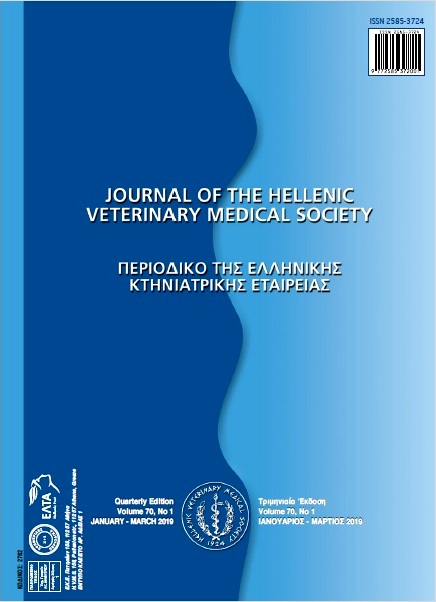The investigation of xylazine, detomidine, isoflurane and sevoflurane anaesthetic combinations on clinical, laboratory and cardiovascular parameters and on intraocular pressure in horses
Abstract
The aim of this study was to investigate the effects of anaesthetic combinations of xylazine, detomidine, sevoflurane and isoflurane on clinical, laboratory, and cardiovascular parameters as well as their effects on intraocular pressure in horses. Twenty-four mixed-breed horses (twelve male and twelve female) were used for this study. The horses were allocated into four groups (six horses in each group): XS (xylazine-sevoflurane), XI (xylazine-isoflurane), DS (detomidine-sevoflurane) and DI (detomidine-isoflurane). Clinical evaluations, hematological, biochemical tests and measurement of intraocular pressure were done before (0th), during (5th, 15th and 30th min) and at the end of anaesthesia (60th min). The detected differences were statistically evaluated. In conclusion, this study shows that the anaesthetic combinations of sevoflurane and isoflurane with xylazine and detomidine provided safe and suitable anaesthesia in horses. Our study did not reveal any statistical differences in intraocular pressure measurements. However, it should be noted that intraocular pressures were measured with the animals lying down and our results do not rule out changes in intraocular pressures in a standing position. We concluded that these anaesthesia protocols are suitable for ophthalmic surgery.
Article Details
- How to Cite
-
EROL, H., & ARICAN, M. (2019). The investigation of xylazine, detomidine, isoflurane and sevoflurane anaesthetic combinations on clinical, laboratory and cardiovascular parameters and on intraocular pressure in horses. Journal of the Hellenic Veterinary Medical Society, 70(1), 1401–1412. https://doi.org/10.12681/jhvms.20348
- Issue
- Vol. 70 No. 1 (2019)
- Section
- Research Articles

This work is licensed under a Creative Commons Attribution-NonCommercial 4.0 International License.
Authors who publish with this journal agree to the following terms:
· Authors retain copyright and grant the journal right of first publication with the work simultaneously licensed under a Creative Commons Attribution Non-Commercial License that allows others to share the work with an acknowledgement of the work's authorship and initial publication in this journal.
· Authors are able to enter into separate, additional contractual arrangements for the non-exclusive distribution of the journal's published version of the work (e.g. post it to an institutional repository or publish it in a book), with an acknowledgement of its initial publication in this journal.
· Authors are permitted and encouraged to post their work online (preferably in institutional repositories or on their website) prior to and during the submission process, as it can lead to productive exchanges, as well as earlier and greater citation of published work.



